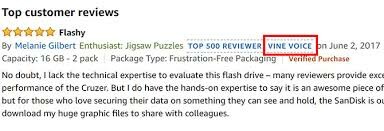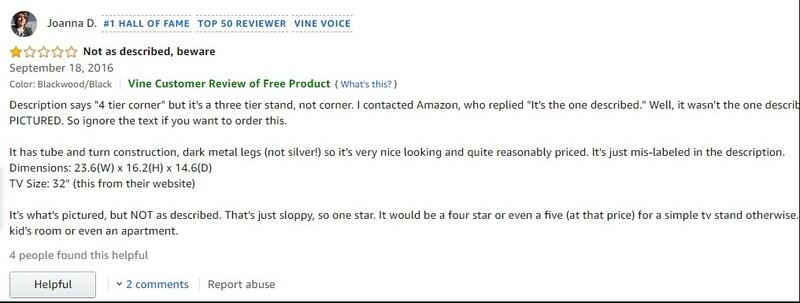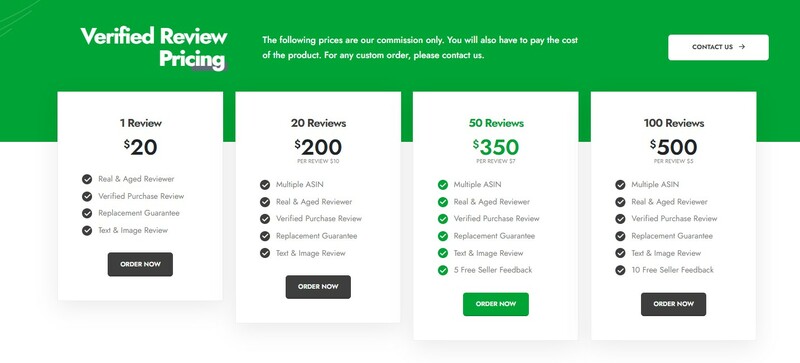As a seller, the Amazon Vine program is an excellent way to get early reviews for your newly launched products. As a buyer, Amazon Vine gives you the opportunity to receive free product in return for your feedback.
Both the seller and the reviewer side of Amazon Vine will be covered in this post including how to join and how the program works.
What is Amazon Vine Program?
In 2007, Amazon launched Amazon Vine to counteract the number of sellers gaining reviews by offering incentives to reviewers.
Amazon invites trusted customers to join its community known as ‘Vine Voices’. Members of Vine Voices are then invited to review new and not-yet-released products listed by sellers and vendors – products that are sent to them by Amazon free of charge.
Sellers and vendors are not able to contact the reviewers or, influence them in any way.
The idea behind this is that these trusted members are likely to leave detailed and thoughtful reviews that are helpful to both sellers and potential customers.
Vine Voices members are carefully selected by examining their activity on Amazon – including the quality of the reviews that they leave for purchases.
When a product is reviewed by Vine Voices, the review displays a badge – which tells customers that it is a trusted reviewer.

To become a Vine Voices reviewer, Amazon customers must fit certain criteria which includes:
- A decent reviewers rank, including regular and recent reviews
- Demonstrated expertise in a specific product category
- Interest in products listed in the Vine program
It’s worth noting that Vine Voices members are under no obligation to leave a review or only leave positive reviews for any given product.
It used to be a program for Vendor accounts only. But it seems Amazon has changed the policy and started to release it to third-party sellers.
How Do I Join Amazon Vine as a Seller?

To begin with, sellers need to fit certain criteria in order to be accepted into Amazon Vine. These criteria are as follows:
- You must be a brand registered Amazon seller with a professional selling plan
- You must own the trademark to your brand name if this appears on your product and packaging
- Your product must have fewer than 30 reviews
- Your product must be in ‘New’ condition
- Your product must not be an ‘adult’ item
- You must have listed the product for selling already
- You must have an available inventory of your product
- Your product page must have an image and full description
Notice:Your product which must have fewer than 30 reviews. After participating in the program, it will be automatically ended once the number of your reviews reach to 30 in total!
If you’re confident that your brand and your products fit the bill, you can join Amazon Vine as follows:
Step 1
Ensure that your brand is enrolled in the Amazon Brand Registry.
Step 2

From the Advertising option, select Vine. You will see that you can only submit up to 5 different products and up to 30 quantities in stock for each of them.
Step 3
It’s now time to submit your products. To do this, upload eligible ASINs into the column where instructed.
Step 4
Once uploaded, you’ll be asked to agree to Amazon’s terms and conditions. And you’ll be able to view the status of your submission within the portal. Amazon will carry on gathering reviews for each of your accepted ASINs.
That’s it! Vine voices can start to order your items within 24 hours after you finished your enrollment.
Though sellers cannot control when reviewers will leave reviews for the item, Amazon will surely select those who are actively leaving reviews on the platform.
Some reviewers may leave a review within a week after delivery, the others may take more than a month to do so. You will be able to view how many reviews you have received at the end.
Things to Know Before Joining Amazon Vine
As with any program, it’s a good idea to know the ins and outs before signing up. Here are a few things to consider before going ahead.
Amazon Vine Fees
In the past, Amazon charges sellers per ASIN to participate in Amazon Vine – and it’s not cheap. Prices vary depending on the product and its price but the charge may be up to thousands of dollars.
The fee is non-refundable – even if you receive nothing but bad reviews from the Vine Voices The cost alone is a very good reason to give serious thought to joining the program.
Amazon Vine costs $200 per parent ASIN to enroll in the program. Amazon Vine used to be free but Amazon started charging for the service on October 12, 2021. You will not be billed for Amazon Vine until after your first review is published.
In addition, child ASINs are free of charge.
Here are the exact requirements to enroll in the Amazon Vine program as a seller.
- You must be enrolled in Amazon Brand Registry
- You must set aside 30 products to give away for free.
- You must have less than 30 reviews on your listing. For example, if you already have 10 reviews on your listing, you can get 20 more reviews at most.
- You must sell brand new private label products via Amazon FBA.
- Your product listing must be active and complete with images and descriptions.
- You must have not previously enrolled the product in Amazon Vine.
How useful is Amazon Vine to sellers?
Amazon Vine can be helpful in gaining quality product reviews. Buyers would likely to be convinced by Vine voice’s reviews, thus increase the conversation rate of your listings, especially when you plan to launch a new item.
But, you should notices that the high price of Amazon Vine means that brands need to weigh up the value of those reviews against the cost which includes any losses you may make from submitting free products to the reviewers.
And also bear in mind the fact that buyers may leave negative reviews as well as positive.

It is suggested to enroll in the program only if you are confident in the quality of your items or you may not be happy with the results that you receive at the end.
The Pros and Cons of Amazon Vine
As with any program, Amazon Vine isn’t for everyone and, here, we’ll take a look at the pros and cons to help you decide if this program is the right one for you:
The Pros
- High-quality reviews – The nature of Amazon Vine means that the quality of reviews tends to be high (rather than those two-word reviews that you sometimes see on Amazon product pages). Vine Voices are considered to be ‘expert’ reviewers which means that a good review from them has a good chance of influencing sales. Buyers will be inclined to believe their opinions.
- A positive Vine Voices review on your product listing gives your product added kudos, increase your conversion rate and gain more sales.
- Sales boost – The Amazon Vine program can help to boost sales for older or non-moving products – which can be helpful if you have inventory to shift.
The Cons
- Cost – Amazon Vine’s high price means that you need to be sure that the results are going to be helpful before making the investment.
- Limitation – Amazon Vince is only available to certain sellers who fit the specific criteria.
- Pot luck – As mentioned, buyers have every right to leave negative reviews as well as positive ones – which means that you may be paying a huge amount of money for something which actually damages your reputation rather than enhancing it.
- Uncertainty – The reviewing time frame is out of control and it takes a long time to get reviews from reviewers. Or, you did not get enough reviews at all.
Best Alternatives to Get Amazon Reviews
SellerPosts.com Review Service

SellerPosts is a dedicated site for Amazon sellers looking for product reviewers. The service costs $5 per reviewers and you need to pay the product cost which is a low cost to help you get in touch with reviewers and promote new items to them. Moreover, you can track your project in realtime into our dashboard.
Gathering reviews is a necessary part of an Amazon seller’s job and, this alternative is a cost-effective way of doing just that.
Conclusion
Whilst there’s no doubt that sellers can gain some high-quality reviews via Amazon Vine, the high price means that it’s only really suitable for those selling high quality, high priced products.
Also, sellers need to bear in mind the fact that it is possible to receive negative and damaging reviews.
In these cases, a seller can contact Amazon but the review is unlikely to be removed unless it contains prohibited content.
Most smaller businesses with cheaper products are likely to find that the investment is not worth the results.
